Our Blog - Barcelona Day 3 - February 2018
I've decided to actually split Day 3 into 2 pages because the first thing we did was a visit to the Sagrada Familla, and there are just too many pictures to shove on a single page with other things, but I also didn't want to cut it short (remove pictures) just to make it shorter. So Click here to go read about the Sagrada Familla and then at the end there will be a link to bring you back here.
So after spending a few hours at the Sagrada Familla, we looked around for a quick lunch nearby, which we found in a little corner bakery. It was mainly a take-away place but they did have 2 stools at a bar, so we sat and shared 4 empanadas. You could tell this was *NOT* a tourist place since they spoke almost no English at all. We did different types: spicy meat (seemed like beef), mushrooms, spinach, and one that she couldn't really tell us what it was but we took it anyway.
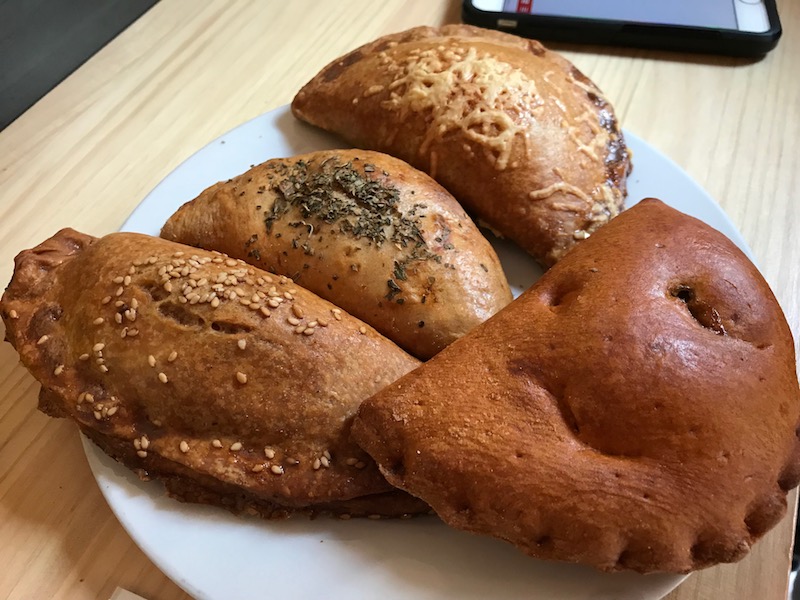
We then headed towards the Mediterranean, walking past the The Maritime Museum of Barcelona. We didn't go inside, but the outside looked like a castle. In fact, it is the building of Drassanes Reials de Barcelona (the royal arsenal of Barcelona). The first mention of the arsenals is in a document from 1243 that indicated the boundaries of Barcelona. Construction of the Gothic building started during the 13th century under the rule of Peter III of Aragon. During excavations in 2012, it was discovered that in the late 16th century, a new building was constructed on top of the old medieval dockyard, giving the building its current structure. This excavations also uncovered a Roman graveyard.
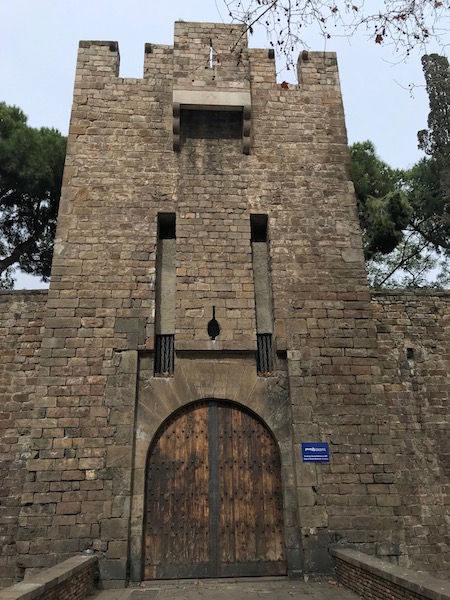
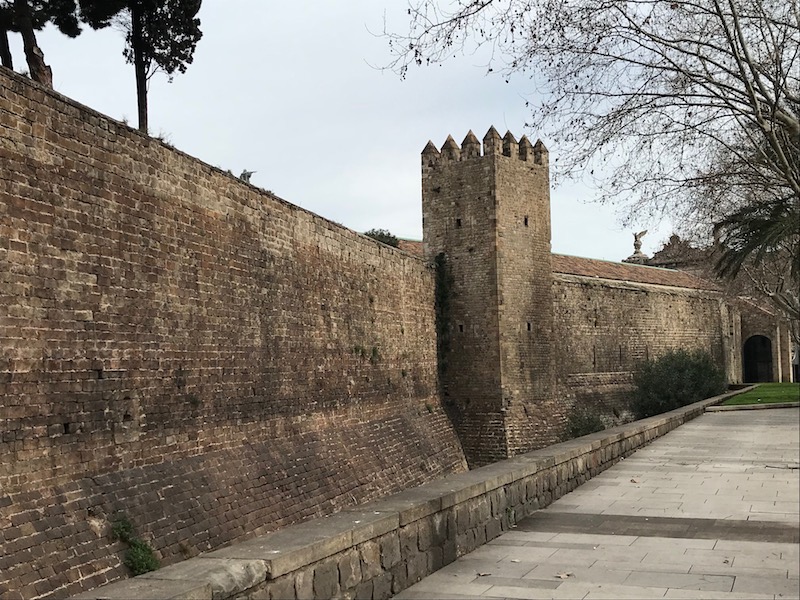
Just across the street was the Old Port, opening on the Mediterranean. We noticed this metal sculpture, entitled Onades (Waves). Created in 2003 by Andreu Alfaro, it is just under 140 feet tall and is made up of seven stainless steel arches. The undulating steel tubes are supposed to evoke images of waves crashing and bubbling on Barcelona’s beaches.
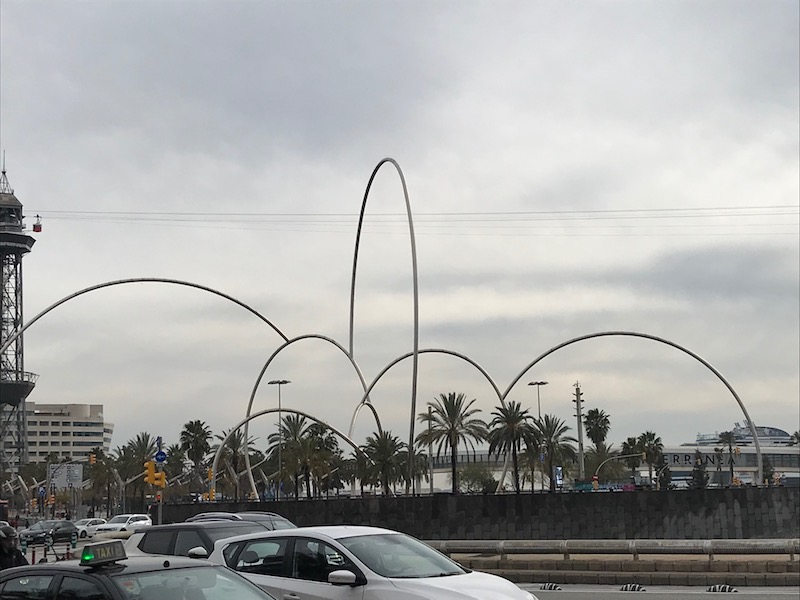
This is the Aduana Customs House, which sits where you would expect it to be, at the old port. It was built between 1896 and 1902 by the architect Enric Sagnier i Villavecchia in collaboration with Pere Garcia Fària, with an H-shaped plan, in Neoclassical style. On the top you can see multiple large winged Sphinxes on the corners as well as eagles in the middle over the name "Aduana". The interior of the building houses allegorical paintings about the imaginary visit of Don Quixote to the city of Barcelona.
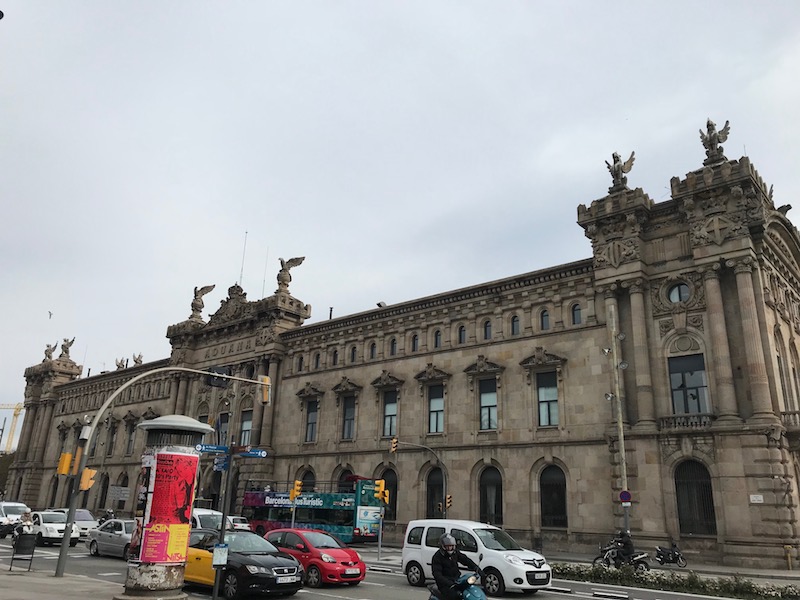
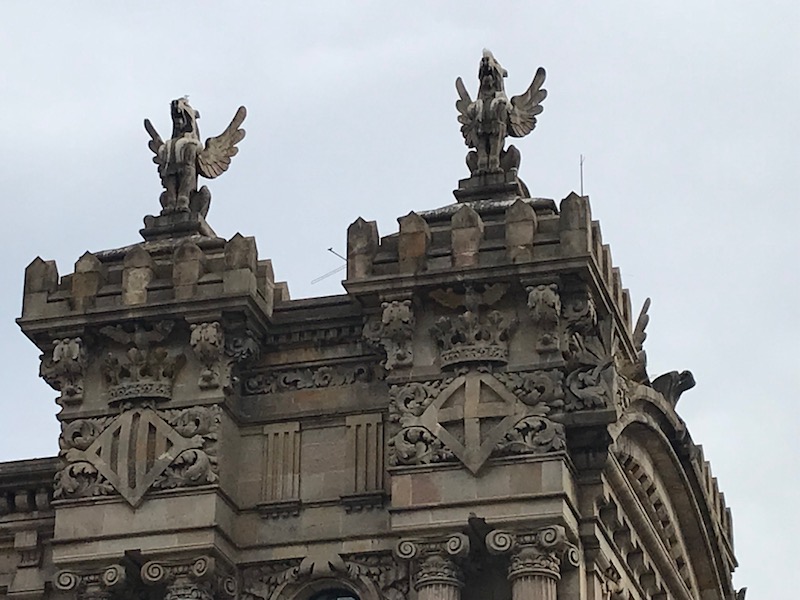
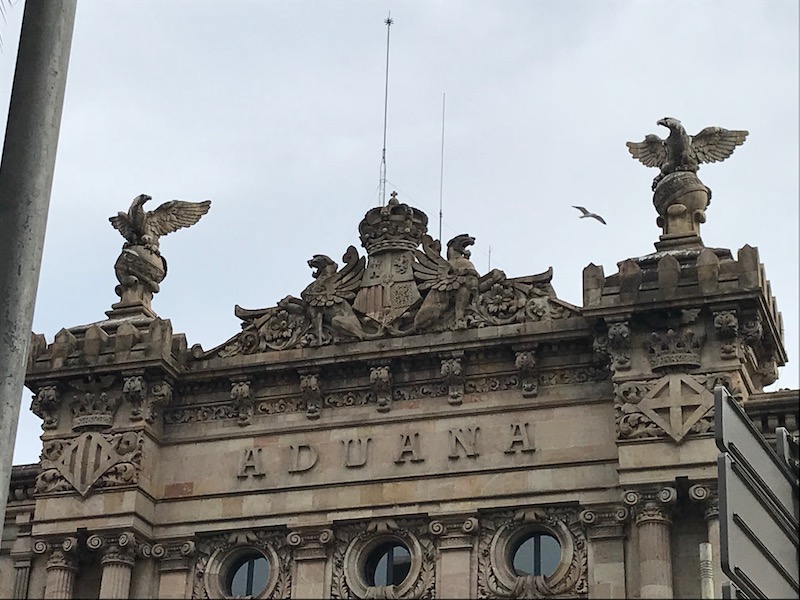
Then a quick picture of the Mediterranean (to prove we got there!)
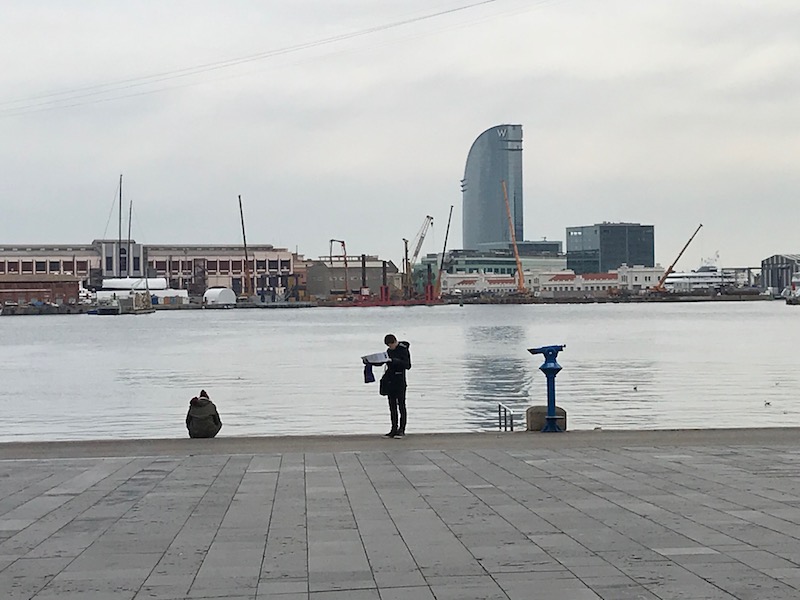
And then the Old Port Authority, which is undergoing what looks to be massive renovations. This is an 18th-century building with "Port of Barcelona" near the middle-top underneath a set of sculptures.
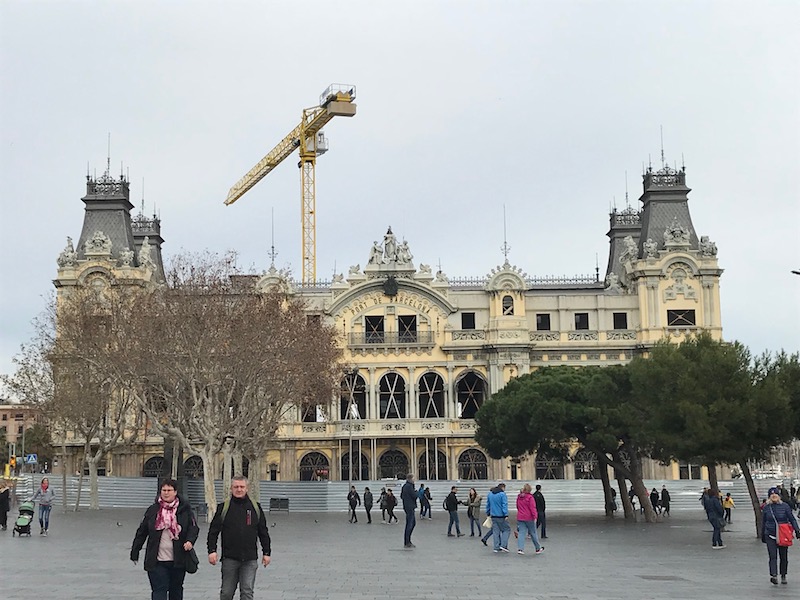
The Columbus monument stands close to 200 feet tall where the Old Port meets the start of the Ramblas. It was built in 1888 for the Universal Expo (Barcelona also held the Universal Expo in 1929) and honors Columbus' first voyage to the Americas. It reminds us that Columbus "worked for" Queen Isabella I and King Ferdinand V of Spain for his trip to the new world and reported back to them here in Barcelona. You'll see Columbus on top holding a scroll in one hand and pointing with the other towards the New World. The way he is pointing is an interesting thing. Most believe that he is pointing to the west towards the New World although others say the statue points east towards Columbus's supposed home city of Genoa. Neither is actually accurate, as it points SSE and so it mainly just points out into the water. Continuing down the monument, the pedestal is just jam-packed with things ... the column has an anchor hanging on it, then 4 bronze winged Victories take flight towards the 4 corners of the world. You can also see 4 figures seated that represent the 4 realms of Spain (Catalonia, Leon, Aragon, and Castile). Then the staircases that are each flanked by 2 large lions.
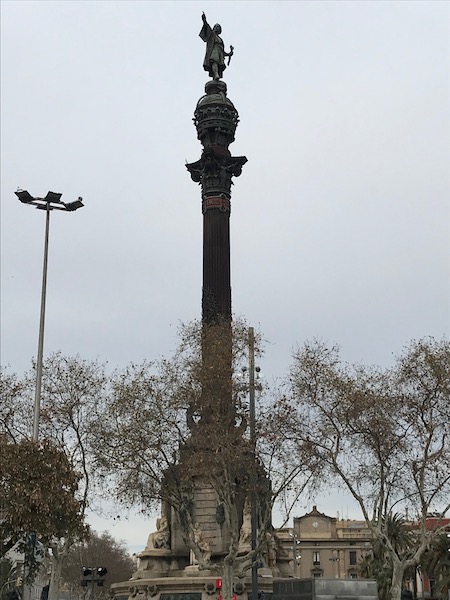

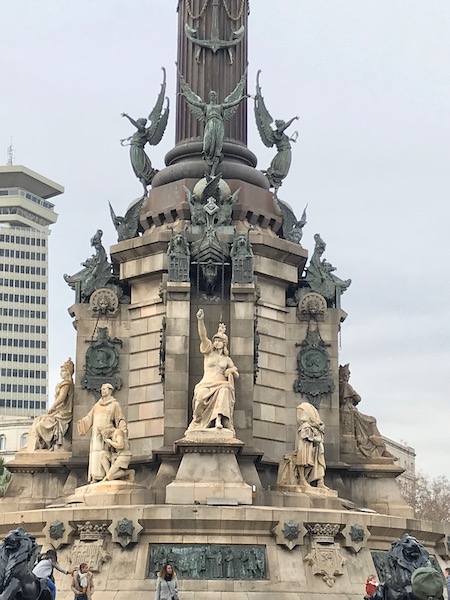

Then back up the Ramblas to Place de Catalunya to catch our Modernist tour with the Tourist Office. As we started, we headed up Passeig de Gràcia, which is basically the Champs Elysees or Fifth Avenue of Barcelona. Most people walk right by the lamp posts without really noticing them, although we did immediately. There are 32 lampposts designed by Modernist architect Pere Falqués i Urpí. They serve two purposes, melding a lamppost with a bench which is made out of white mosaic pieces. If you look at the lamppost, you can make out a bat and a crown, which are heraldic symbols of the Counts of Barcelona, who ruled an empire that covered much of the Mediterranean throughout the Middle Ages.
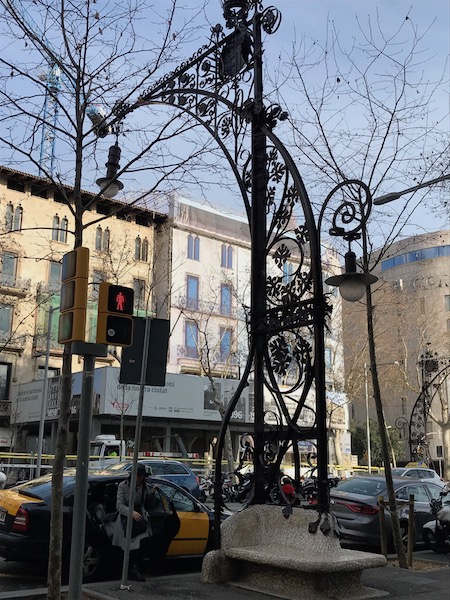
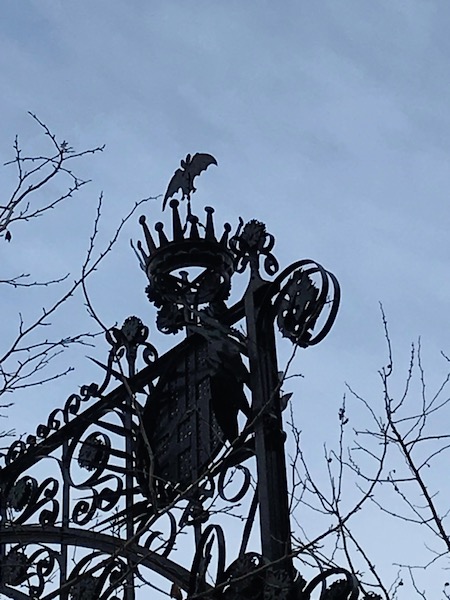
Close by is Casa Amatller, which was originally designed as a residence for chocolatier Antoni Amatller and was built between 1898 and 1900. He used an interesting stair-step design for the top of the house, which was extremely unique (and at that point in time, very odd) for Barcelona.
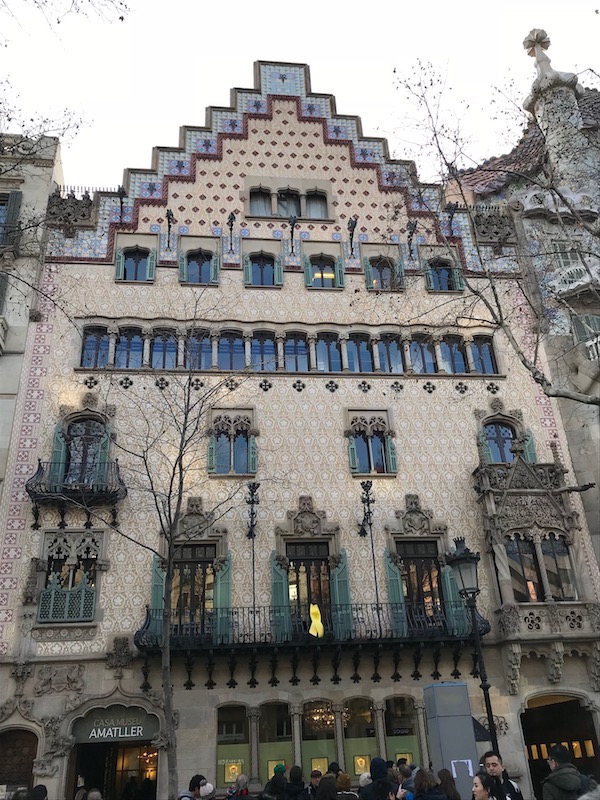
The building also had the Amatller chocolate store on the main floor (and it is still there). As you walk in the main floor, you can peek at the exceptional tilework and ceilings in the foyer. It has a grand staircase where the family would go up to the living quarters. And while not the best picture (it was difficult to get it), you can see about 1/2 of the stained glass window at the top of the staircase.
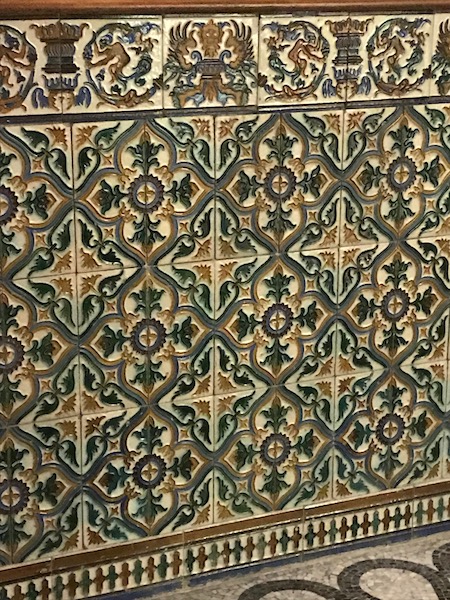
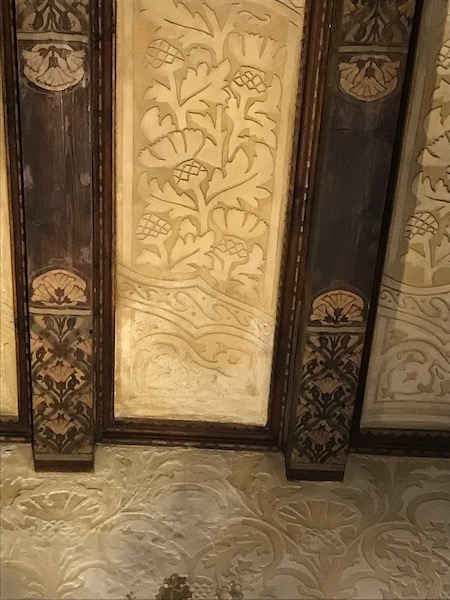


In 1902, Francesca Morera wanted her 1864 mansion remodeled and got modernisme architect Lluís Domènech i Montaner to do the work. The new mansion, named Casa Lleó Morera for her son (she died in 1904), was awarded Barcelona's town council's Arts Building Annual Award (Concurso anual de edificios artísticos) in 1906. The family name, Morera, means mulberry tree and you see mulberry motifs in the decoration, like on the balconies. You can also see winged lions on other balconies ... a lot of balconies to allow the rich family to be seen. While I didn't get a picture of it, there is a cupola on the top, which made this house taller than the Casa Amatller that was in the same block.
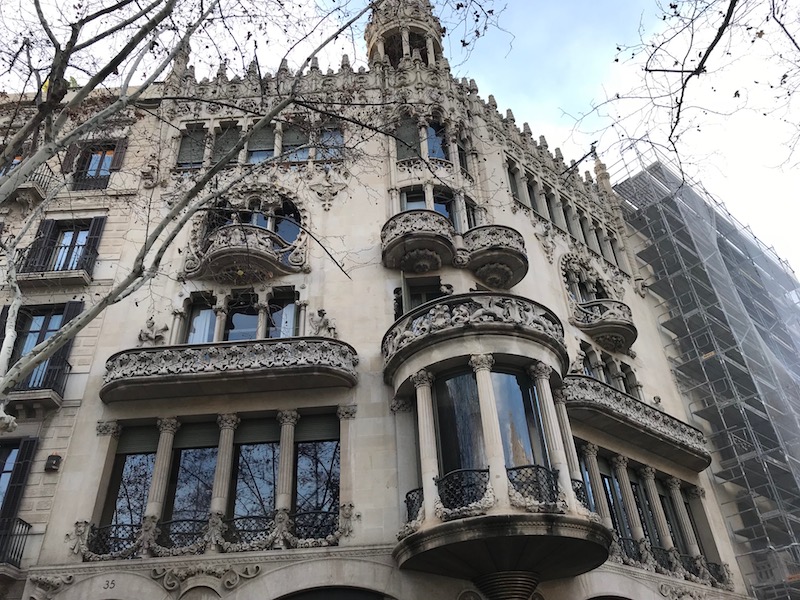

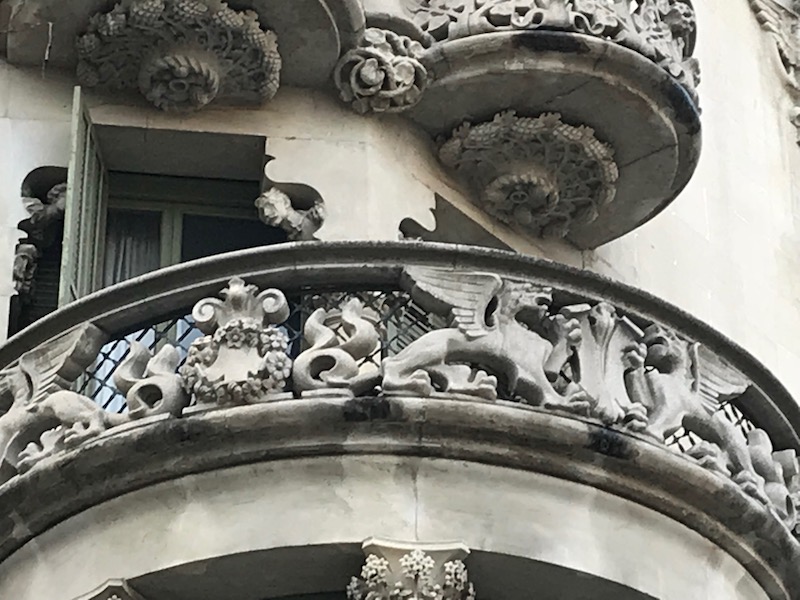
Now, Gaudi enters into this little block of buildings with Casa Batlló. The building already existed, and Gaudi was asked to "remodel" it, which he did in 1906. The owner wanted an architect that would design a house that was like no other and stood out as being audacious and creative, and put no limitations on Gaudi. The only direction given was that they did not his house to look like any of the houses of the rest of the Batlló family. Locals call it Casa dels ossos, or House of Bones, since it has elements that look skeletal in nature. The ground floor contains irregular oval windows and flowing sculpted stone work. Much of the façade is decorated with a mosaic made of broken ceramic tiles that starts in shades of golden orange moving into greenish blues, which evokes the surface of a lake with water lilies, reminiscent of Monet's Nymphéas. While you can't see it well, the roof is arched and with the tiles, it looks like the back of a dragon (perhaps the dragon killed by Saint George, the patron saint). The balconies may remind you of the eyes (of a dragon)? Then it is topped by a cross, which again made it the tallest building on the block.
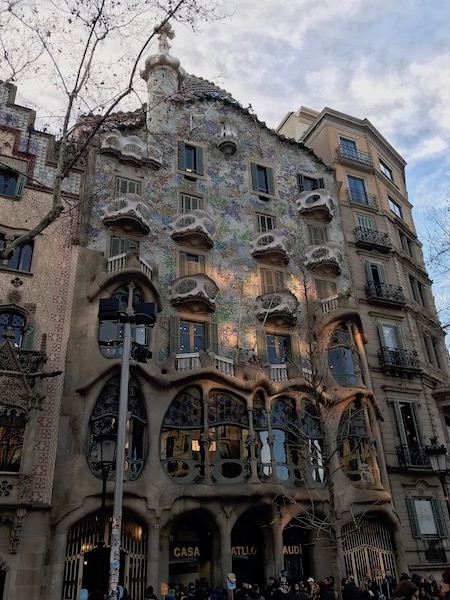


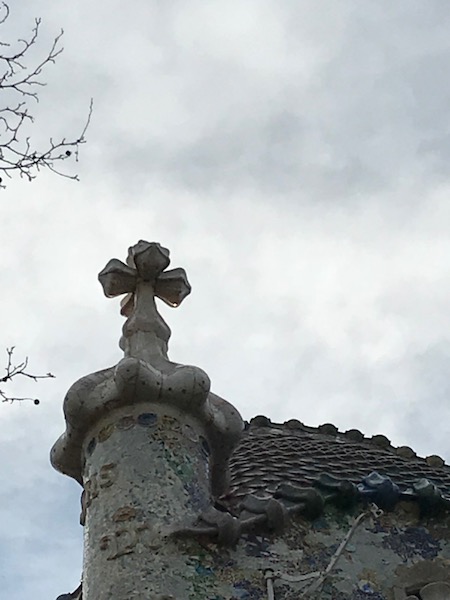
Tonight's dinner was at Cafe de L'Academia. We had to wait a bit since we failed to make a reservation by phone. We had figured it was 50/50 when we called, since he was having a problem understanding us in English. But they were quite nice and we sat at the bar for about 15 minutes and then got seated.




We again ordered several different times that we shared. We started with small whole-wheat toasts with anchovies and mozzarella. While I normally say that fish and cheese do not go together, this was actually quite good.

Next we had grilled razor clams with garlic and parsley. So I've seen these before but hadn't tried them ... and I'm not sure I will order them again. They weren't bad, but I don't know that I would specifically say they were really good either ... "nothing to write home about" :-)

Grilled squid with rice, black sauce, and mushrooms ... probably my favorite dish (yea, I know, surprised me also!).

And of course, grilled Catalan sausage with poached egg and wild asparagus. Other Catalan sausages we had tried were more dry sausage, while this was more like a breakfast sausage. I'm not a big fan of asparagus, but this was done really well.

Today, we split a plate of a sampling of 5 different desserts including a couple cheesecakes ad a banana and cream cake. We hadn't really been doing desserts but these all were good ... not "France-good", but good.

Continue to Day 4.